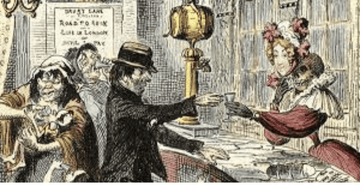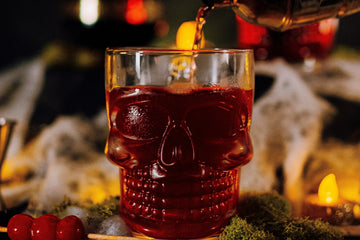
Exploring the Gin Craze of 18th Century England: A Look back by Filey Distillery's Maker and Historian Dr David.
When it comes to gin, few figures loom as large in the history of the spirit as William Hogarth and his iconic 1751 etching 'Gin Lane'. The image, which depicts the devastating effects of gin addiction on the poor, was part of a wider political campaign against the uncontrolled production and sale of cheap gin. But while 'Gin Lane' may have helped to curb the excesses of the 18th-century gin craze, the spirit has since undergone a resurgence in popularity. Today, gin lovers can visit a variety of distilleries across the country to see how the spirit is made and sample different varieties. One such distillery is the Filey Gin Distillery located in the picturesque coastal town of Filey in North Yorkshire.
The History of Gin
Gin has a long and storied history, with roots dating back to the 1680s when the government encouraged distilling and the sale of gin. The goal was to prop up English grain prices and move the public away from French wine and brandy. At the time, France was the country’s religious and economic enemy. It has been contended that the taste for gin had been brought across the Channel by protestant English troops, who fought alongside the Dutch during the fight to free the Low Countries from the rule of Catholic Spain and create a Protestant state. The English saw the Dutch troops drinking genever before battles, they followed suit, hence the term Dutch Courage, and thereby acquired a taste for genever, which was later anglicized and shortened to gin.
The Gin Craze
In an attempt to exert control on the consumption of gin, the government passed the Gin Act of 1736 which imposed high taxes on sales, a two-gallon maximum sale quantity, and an annual licence for retail sales of £50. However, these measures only served to drive the trade underground. The retail sale license was such a failure that it was abolished in 1743. With weak controls on production and even less on sales, the country entered what is known as the Gin Craze.
The Impact of the Gin Craze
The Gin Craze had a particularly devastating impact on the poor of society. It was said that they had but two pleasures; sexual intercourse and gin. As the latter lasted longer, it was gin that was the preferred escape from a grim and often short life. At one point, it was estimated that up to a quarter of all residences in the poorer parts of London were gin shops, they often went hand-in-hand with moving on stolen goods and prostitution.
The Role of Hogarth's Etchings
The success of Hogarth's etchings, Gin Lane and Beer Street, can be measured by the fact that later the same year the Gin Act of 1751 was passed. This Act dramatically reduced gin consumption and placed the spirit into disrepute for another century. The Act expressly prohibited distillers from selling gin to unlicensed merchants, imposed high fees on those same merchants, and restricted retail licenses to those with large properties. To help draw the public away from gin, the importation of tea was encouraged, and in particular, men were encouraged to drink beer.
The Legacy of the Gin Craze
It is a startling fact that the 1751 Act shaped the drinking habits of Britain for two and a half centuries. But it wasn’t just Hogarth who lampooned society during the Gin Craze. George Cruikshank, a caricaturist and book illustrator, was known as the ‘modern Hogarth’. He was a close friend of Charles Dickens and illustrated many of his books, most famously the 1838 novel Oliver Twist.
Join us in our next history blog to hear more about Cruikshank and the temperance movement.




